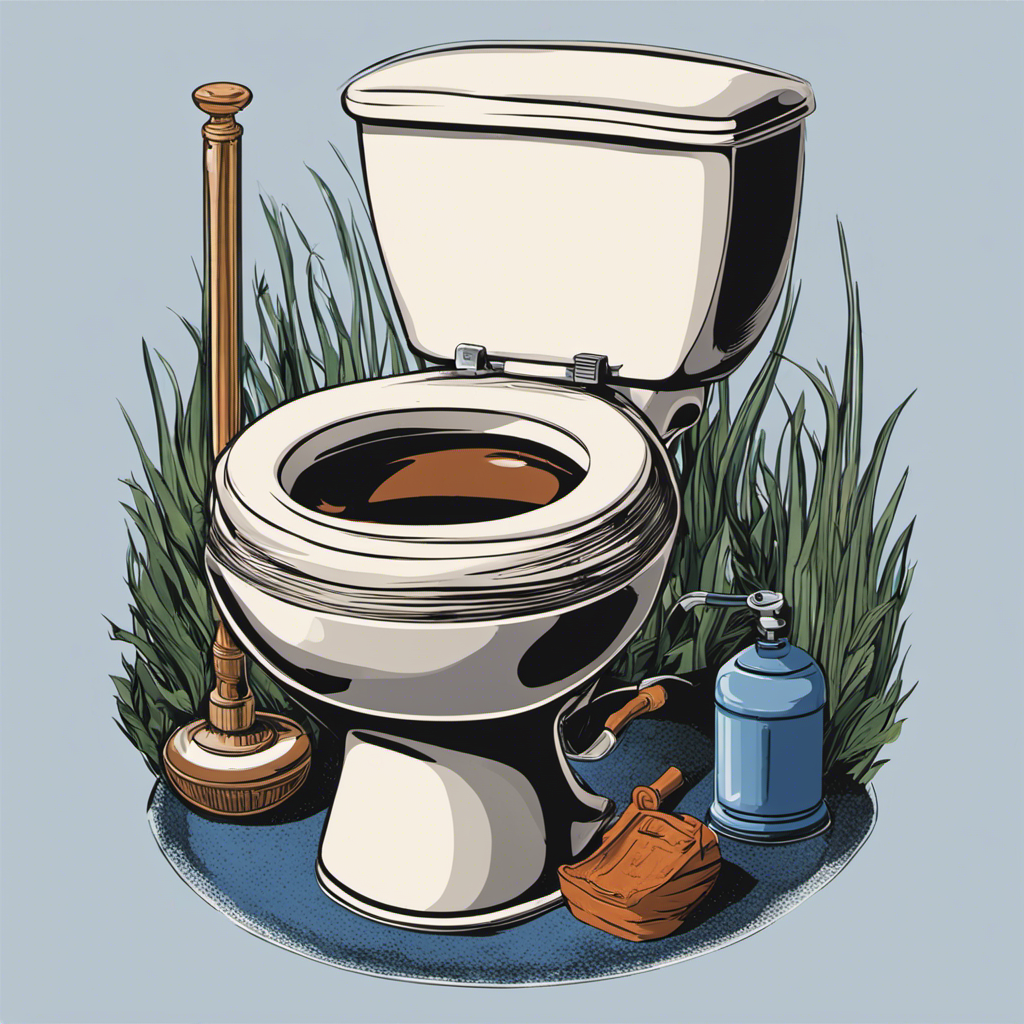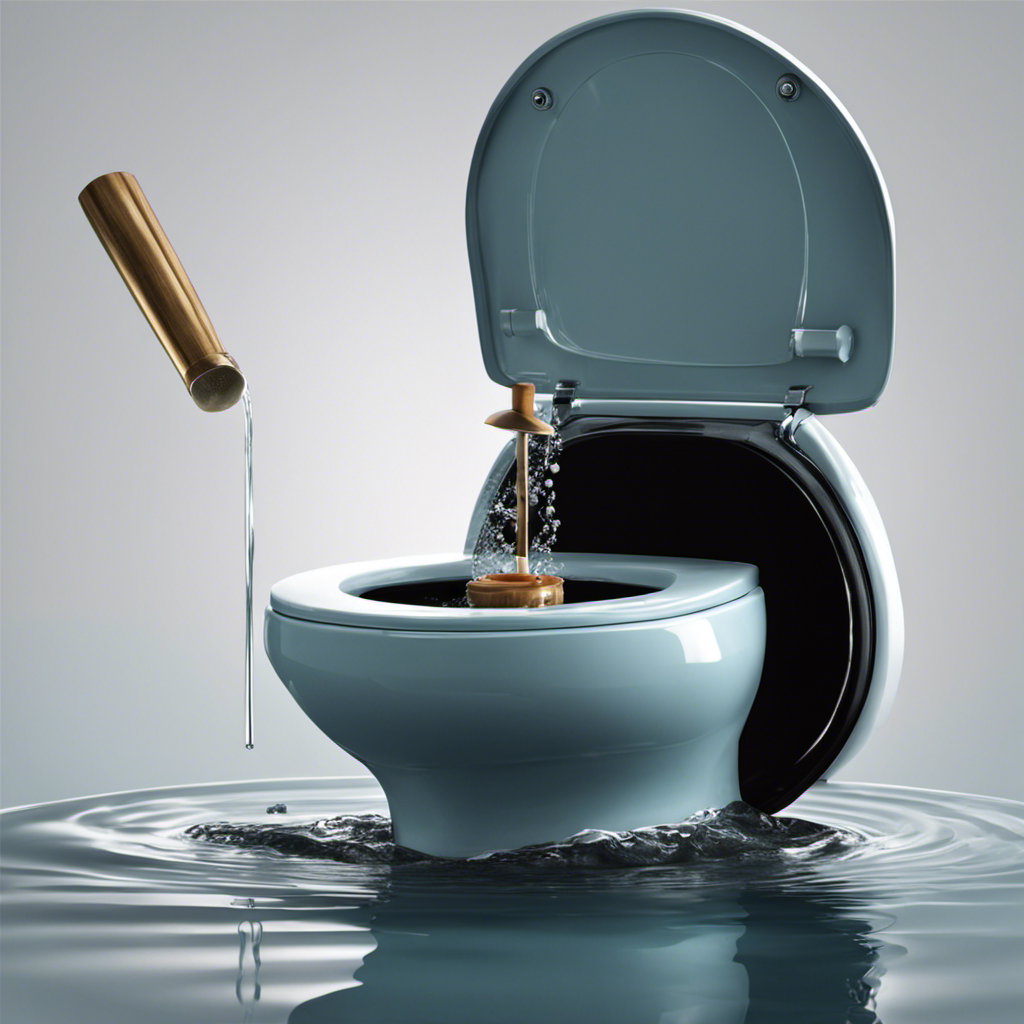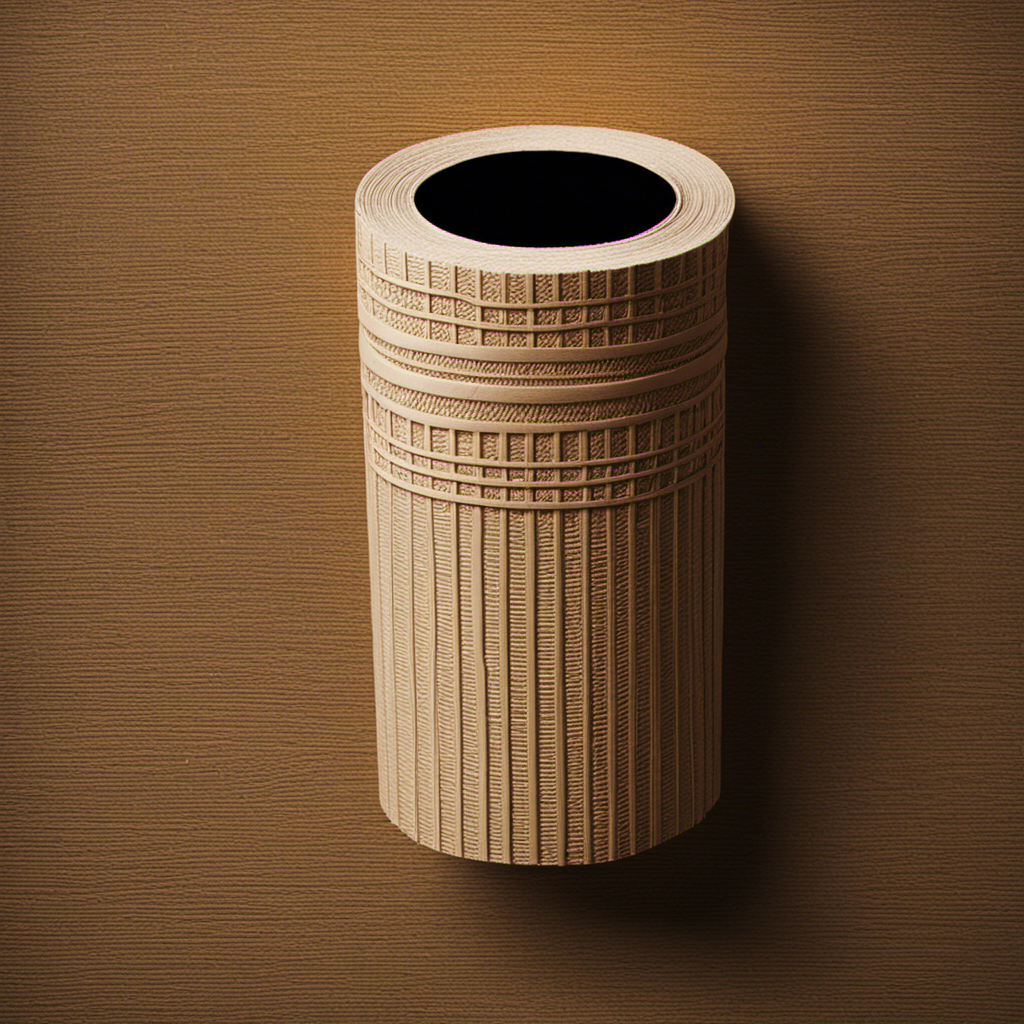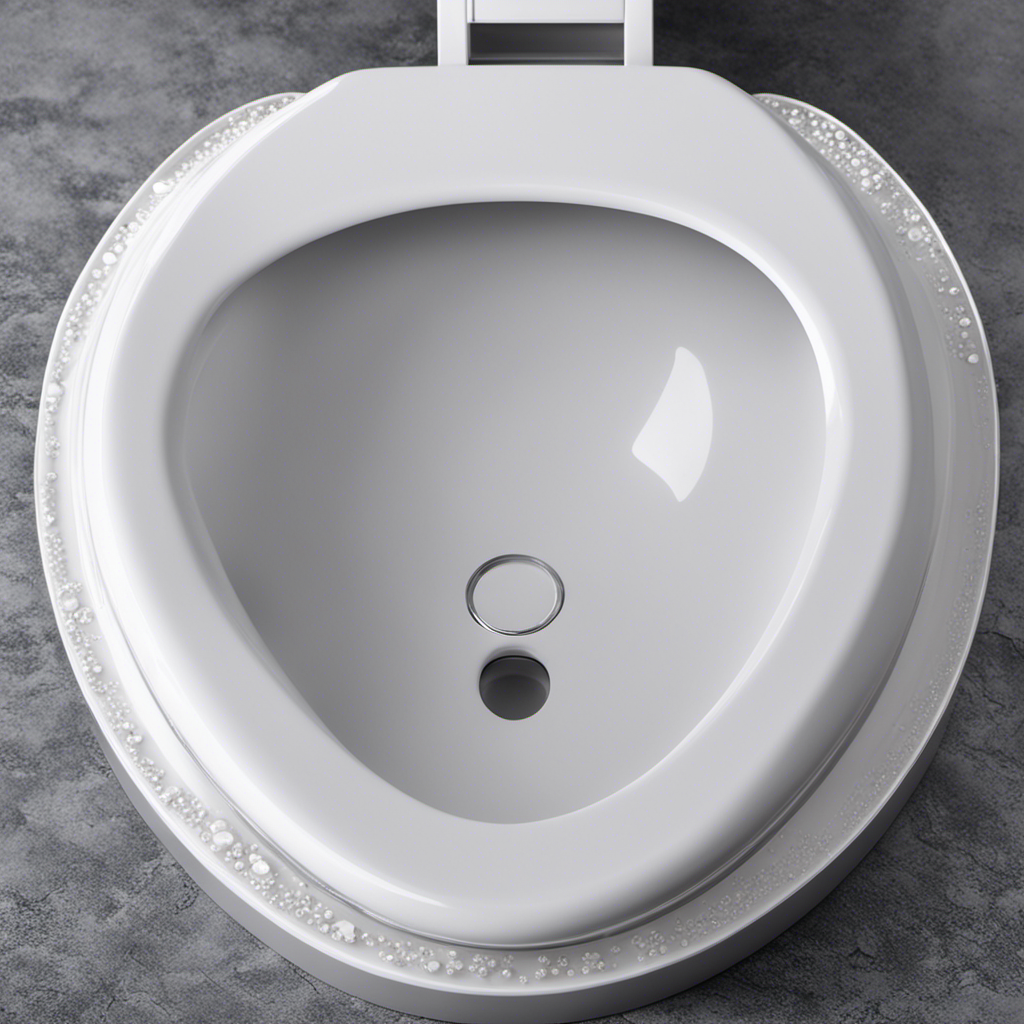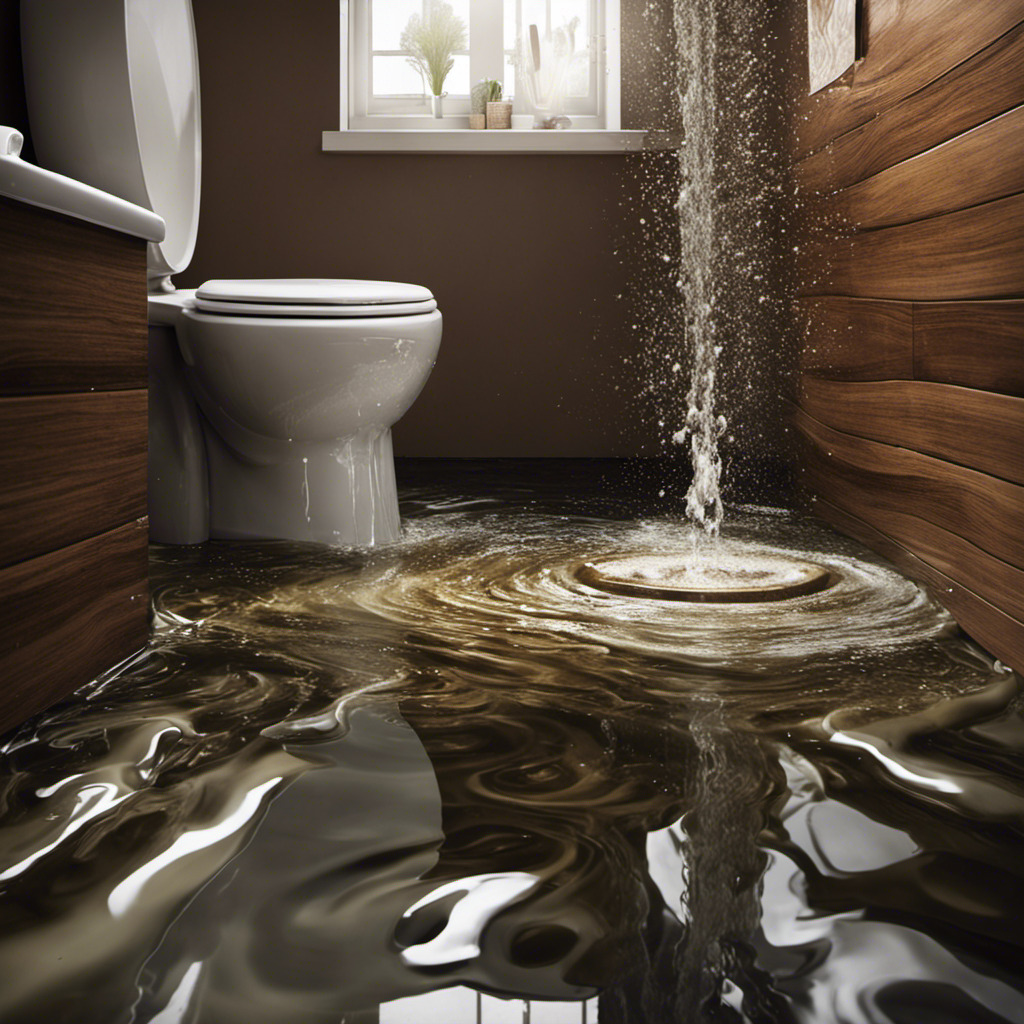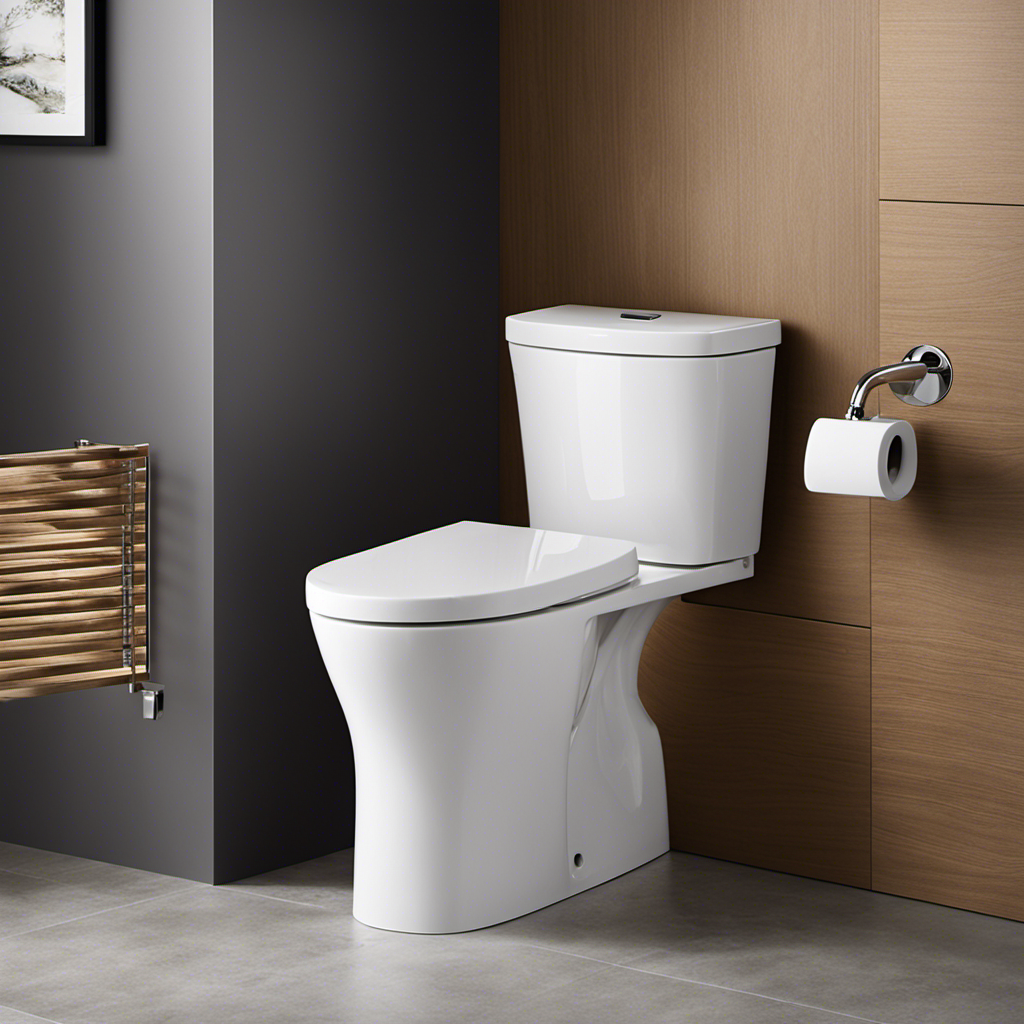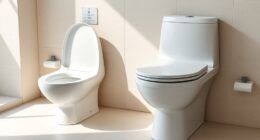I’ve been there before – standing in a bathroom, desperately wondering how to clear a clogged toilet. It’s not the most glamorous task, but it’s a necessary one. Lucky for you, I’ve got the answers you’re looking for.
In this article, I’ll walk you through the common causes of toilet clogs, the tools and materials you’ll need, and a step-by-step guide on how to clear that pesky clog. Plus, I’ll even share some alternative methods and tips for preventing future clogs.
Let’s get started!
Key Takeaways
- Flushing too much toilet paper or non-flushable items can cause clogs.
- Regularly using an enzyme-based cleaner can help prevent future clogs.
- Avoid flushing wipes, paper towels, and feminine products.
- Tools like a plunger, bucket, rubber gloves, and a drain snake can be helpful in unclogging a toilet.
Common Causes of Toilet Clogs
One of the most common causes of toilet clogs is when you flush too much toilet paper at once. To prevent toilet clogs, it’s important to use an appropriate amount of toilet paper and to avoid flushing other items like wipes or feminine hygiene products.
Signs of a clogged toilet include water rising to the top of the bowl when you flush, slow draining, or complete blockage. If you notice any of these signs, it’s important to take action to prevent further damage.
In the next section, I will discuss the tools and materials needed for unclogging a toilet, which will help you tackle the clog effectively.
Tools and Materials Needed for Unclogging a Toilet
To unclog a toilet, you’ll need a plunger, a bucket, rubber gloves, and a drain snake. Here’s what you can do with these tools:
Plunger:
- Place the plunger over the drain hole in the toilet bowl.
- Apply firm downward pressure and quickly pull up to create suction.
- Repeat this plunging motion several times until the clog is cleared.
Bucket:
- Use the bucket to remove excess water from the toilet bowl before unclogging.
- This will prevent any overflow or mess while working on the clog.
Rubber gloves:
- Wear rubber gloves to protect your hands from any bacteria or germs.
- They will provide a hygienic and safe experience while unclogging the toilet.
Drain snake:
- If the plunger doesn’t work, use a drain snake to manually remove the clog.
- Insert the drain snake into the toilet drain and twist it to catch the clog.
- Pull out the snake slowly to remove the clog and restore the toilet’s functionality.
Step-by-Step Guide on Clearing a Clogged Toilet
By following these steps, you can easily get your toilet working again. Unclogging a toilet without a plunger can be frustrating, but there are natural remedies you can use to clear a clogged toilet. Here’s a step-by-step guide to help you out:
-
First, gather your supplies. You’ll need a bucket, dish soap, hot water, and a toilet brush.
-
Pour about half a cup of dish soap into the toilet bowl. The soap will act as a lubricant and help break up the clog.
-
Next, carefully pour hot water into the bowl. The hot water will help dissolve the clog and push it through the pipes.
Now, let the mixture sit for a few minutes. The soap and hot water should help loosen the clog. After a few minutes, use the toilet brush to gently agitate the water and try flushing the toilet.
If the clog isn’t cleared, you may need to repeat the process or consider using a plumbing snake. Remember, it’s important to avoid using harsh chemicals as they can damage your pipes.
Alternative Methods for Unclogging a Toilet
If you’re looking for other ways to unclog your toilet, you can try using baking soda and vinegar as a natural remedy. Here are some DIY methods for clearing a clogged toilet without a plunger:
- Pour half a cup of baking soda into the toilet bowl.
- Slowly pour one cup of vinegar into the bowl, being careful not to overflow.
- Let the mixture sit for about 30 minutes to allow the chemical reaction to take place.
After 30 minutes, pour a pot of boiling water into the bowl to flush out the clog. If the clog persists, you can try using a toilet brush to gently dislodge it. Another method is to use a wire hanger. Straighten it out and create a hook at one end. Insert the hooked end into the toilet drain and try to break up the clog. Lastly, you can use an enzyme-based cleaner specifically designed for unclogging toilets. Follow the instructions on the product for best results.
These natural remedies and DIY methods can be effective in unclogging your toilet without the need for a plunger.
Preventing Future Toilet Clogs
Using an enzyme-based cleaner regularly can help prevent future clogs in your toilet.
In addition to using the cleaner, there are a few other toilet maintenance tips you can follow to keep your toilet clog-free.
First, be mindful of what you flush down the toilet. Avoid flushing items like wipes, paper towels, and feminine products, as these can easily cause clogs.
Second, make sure to clean your toilet regularly to prevent any buildup of debris or mineral deposits.
Lastly, if you do encounter a stubborn toilet clog, there are a few methods you can try. One option is using a plunger to create suction and dislodge the clog. Another method is using a toilet auger to break up the clog.
Remember to always use caution and follow proper safety guidelines when dealing with toilet clogs.
Conclusion
In conclusion, unclogging a toilet may not be the most glamorous task, but with the right tools and a little bit of know-how, it can be a satisfying and practical DIY project.
Imagine the sense of accomplishment as you successfully clear the clog and restore your toilet to its full flushing power.
Picture yourself confidently using the plunger or a toilet auger, taking control of the situation and saving yourself from the hassle and expense of calling a plumber.
With these tips and techniques, you’ll be well-equipped to tackle any toilet clog that comes your way.
Happy unclogging!
